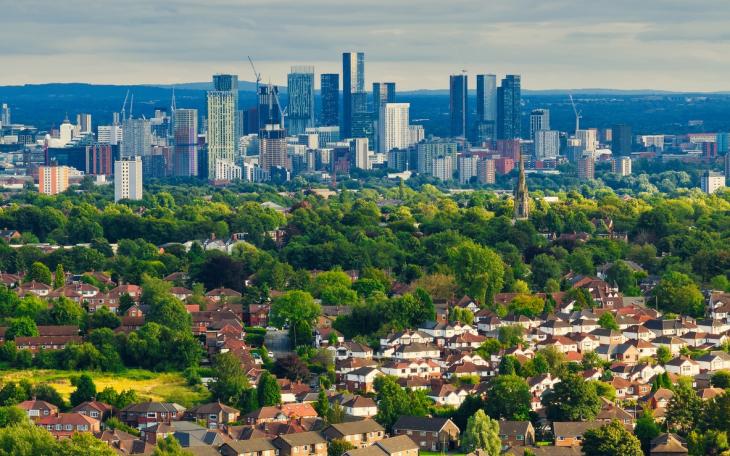Places for Everyone: Is Greater Manchester’s hot potato about to warm up again?

Protest, political posturing, and prolonged delays seem to be a staple of any planning-related strategy or decision these days. Nothing illustrates this more than the evolution of England’s largest joint local plan: Greater Manchester’s controversial ‘Places for Everyone’.
This August, after a period out of the limelight, the nine-year-old strategy is set to return to the headlines after being given the go-ahead by government inspectors to move to the next stage on its journey towards adoption.
The plan, formally known as the Greater Manchester Spatial Framework (GMSF), ambitiously and – in my view – necessarily, plots the future of development throughout the city region. Its original proposal to build 165,000 homes across the conurbation between 2022 and 2037 – much of which was on designated green belt land – somewhat predictably led to a widespread backlash among communities and their political representatives in the ten authorities that make up the wider region.
Whatever name it has taken, and despite its principled aims (more homes, jobs, better town centres and transport infrastructure), the GMSF/PfE has been a byword for controversy and a political hot potato from the start; the plan having seen repeated revisions and re-writes to please various local interests and electoral cycles.
Speaking from my own previous experience as a Greater Manchester councillor during some of its evolution, I can attest to the strength of feeling from backbench councillors and opposition groups as town hall leaders grappled with how the plan could be accommodated in their local area. While many supported the aspirations of more houses and better infrastructure, the problems arose when they simply didn’t want them in their backyard.
Fast-forward to the present day, and following modifications by the Department for Levelling Up, Housing and Communities, the (somewhat cooler) potato has now landed once again in the in-trays of our municipal leaders. Except this time round, ten has become nine with the withdrawal of Stockport from the strategy in 2021 – making it more of a ‘Places for (almost) Everyone’ plan.
The latest modifications include extending the plan’s validity to 2039 and increasing the number of homes built from 165,000 to 175,000. While the plan highlights the undeniably large number of positives that will come from its adoption, including the rejuvenation of green spaces and town centres, the new wording clearly states that this will require a larger proportion of green belt land.
Paul Dennett, GM Combined Authority’s lead on PfE, has set a goal of 2024 for the final adoption of the plan – ten years after it was conceived. Given the need for the approval of each authority, followed by yet another round of public consultation, it is likely that the controversies of the past decade will once again be woken from their slumber.
Although Greater Manchester has seen a period of relative political stability during the plan's evolution (not difficult when measured against recent national politics), we should not rule out further battles ahead as it draws closer to becoming a reality.
After being cooled down in part by the distraction of the national political circus and in part by its lack of tangible or newsworthy progress, what was the city region’s hot potato for many years, may just be warming up again. Watch this (green) space.









